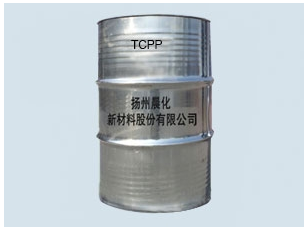In the application of flame retardant, there are also various defects. There are few flame retardant products in powder coating industry on the market, and the flame retardant mechanism is different. In order to achieve better flame retardant effect, the dosage of flame retardant is generally about 5-10%, which will cause certain damage to the coating film, and will also be greatly affected in the process of powder coating processing. For example, the dosage of flame retardant composed of bromine compound and antimony trioxide on the market is 5%, and the flame retardant level is at the same time It can reach V0 level, but the smoothness of coating is very poor. In the flame retardant test of powder coating products, due to the different materials selected, there are black smoke or irritating smell in the combustion products, which causes serious environmental pollution. Due to the high price and high production cost of flame retardant products, their application in powder coating industry is limited to a large extent, and most flame retardant products cannot pass the EU toxicity test.

In order to solve the problem of flame retardancy, the addition of flame retardant alone can not meet the demand. It has been studied that the powder coating made by fr-1530 has excellent flame retardant effect. The resin has excellent melting rate, high flame retardant efficiency, excellent thermal stability and good physical and mechanical properties. According to the flame retardant standards, manufacturers can choose the appropriate amount of flame retardant to produce flame retardant materials with good heat resistance, light resistance and impact strength. However, this kind of flame retardant is rare in the market.
The heat released by any combustion in a short time is limited. If a part of the heat released by the fire source can be absorbed in a short time, the flame temperature will be reduced, and the heat radiated to the combustion surface and acting on the cracking of gasified combustible molecules into free radicals will be reduced, and the combustion reaction will be to a certain extent. At high temperature, the flame retardant has a strong endothermic reaction, absorbing part of the heat released from combustion, reducing the surface temperature of combustible materials, effectively inhibiting the formation of combustible gases and preventing the spread of combustion. The flame retardant mechanism of Al (OH) 3 flame retardant is to increase the heat capacity of the polymer, so that it can absorb more heat before reaching the thermal decomposition temperature, so as to improve its flame retardant performance. This kind of flame retardant can give full play to its heat absorption characteristics when combined with steam, and improve its own flame retardant ability
After adding flame retardants in combustible materials, flame retardant can form glass or stable foam covering at high temperature, and isolate oxygen, which has the function of heat insulation, oxygen isolation and preventing flammable gas from escaping outward, so as to achieve the purpose of flame retardancy. For example, organic phosphorus flame retardants can produce more stable cross-linked solid substances or carbonized layers when heated. On the one hand, the formation of carbonization layer can prevent the further pyrolysis of polymer, on the other hand, it can prevent the internal thermal decomposition products from entering the gas phase to participate in the combustion process.
According to the chain reaction theory of combustion, free radicals are needed to maintain combustion. The flame retardant can act on the gas phase combustion zone to capture the free radicals in the combustion reaction, so as to prevent the spread of flame, reduce the flame density in the combustion zone, and finally reduce the combustion reaction speed until the end. For example, the evaporation temperature of halogen-containing flame retardants is the same or similar to that of polymer decomposition temperature. When the polymer is heated to decompose, the flame retardant also volatilizes. At this time, the halogen-containing flame retardant and thermal decomposition products are in the gas-phase combustion zone at the same time, and the halogen can capture the free radicals in the combustion reaction, thus preventing the spread of the flame, reducing the flame density in the combustion zone, and finally reducing the combustion reaction speed until the end. When the flame retardant is heated, the non combustible gas will be decomposed, and the concentration of the combustible gas decomposed from the combustible material will be diluted to below the lower combustion limit. At the same time, it can also dilute the oxygen concentration in the combustion zone, prevent the combustion from going on, and achieve the flame retardant effect.